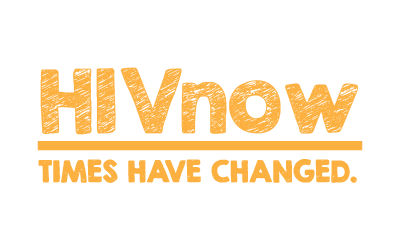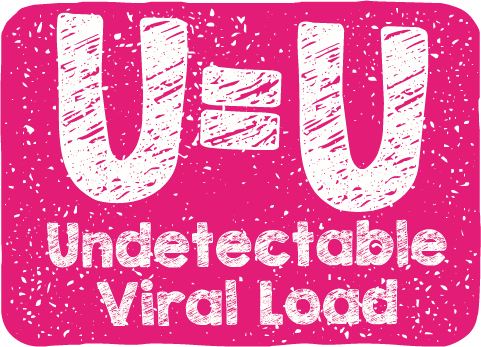What is Undetectable Viral Load?
Viral Load is the amount of HIV present in a milliliter (mL) of blood. Viral load testing is a regular part of health check-ups for people who are HIV-positive. You may see a viral load measure written as “undetectable” or “suppressed.”
Undetectable refers to a viral load that is below levels that can be detected on current HIV viral load tests. This does not mean the virus is gone. In Ontario, this means that there are less than 40 copies of the HIV virus per mL of blood. This is important because it means they cannot pass HIV to someone else.
A person’s viral load being suppressed does not mean they are cured of HIV as there is no cure. They are still HIV-positive, but medications allow their immune systems to function regularly and prevent their ability to pass HIV to someone else.
Viral Load and HIV Transmission
When someone initially becomes HIV-positive, HIV replicates quickly in their body. During this initial stage, viral load quickly rises to a high level, and the risk of HIV transmission to a partner is also higher. Approximately half of all new HIV infections in Canada involve an HIV-positive person who has recently been infected, and who often does not know they have HIV. [1]
As time goes on, their viral load will drop to a steady level, and the use of HIV medication can lower viral load even further to undetectable levels. This is good for the health of the person living with HIV and for stopping HIV transmission to others.
While the threshold for undetectable viral load in Ontario is generally 40 copies of HIV per mL of blood, in other countries this number may be higher. For example, up to 200 copies per mL is considered ‘undetectable’ in areas of Europe where the PARTNER study was conducted. [2] (Note: the PARTNER study was a landmark study, in which no HIV-negative participant became HIV-positive when their sexual partners were undetectable and when no condom was used. In this study, undetectable was a viral load of 200 copies and below.)
The idea of “undetectable” is also relevant when considering criminal charges and disclosure. While Ontario’s medical technology can only find a viral load at or above 40 copies of HIV per mL of blood, the Canadian legal system may define the boundary for “low” viral load as 1,500 copies/mL and less, as it applies to laws around when to disclose living with HIV. Note: Having a viral load below 1,500 copies or an undetectable viral load does not absolve the legal responsibility to disclose HIV status. Courts have attached further conditions to when not disclosing is legal – of which “low viral load” is only one condition. If you are interested in this topic, please seek out specific resources on the Canadian HIV Legal Network (www.aidslaw.ca) or the HIV & AIDS Legal Clinic Ontario – HALCO (www.halco.org) web sites. Note this is usually termed “HIV criminalization” or “HIV and the Criminal Law” on legal websites addressing this complex issue.
Achieving Undetectable Viral Load
Established research shows that starting treatment as soon as possible makes it easier for people living with HIV to get to an undetectable level more quickly, as well as live longer, healthier lives.
For some people, it can take a long time to get to an undetectable level, and some folks aren’t ever able to get there. For someone living with HIV who has a detectable viral load, other prevention strategies, such as using condoms, having sex with other HIV-positive people, or choosing HIV-negative partners that take PrEP, can reduce anxiety and help sex feel even better. (In terms of sex with another person living with HIV they should consider discussing Hep C.)
Just because the research promotes early treatment, that doesn’t mean everyone is ready for it. Some people who are living with HIV may feel pressured to go on meds to achieve an undetectable viral load. Treatment should be based on what works best for that person’s health. Community services like ACT, peers, and medical professionals can help you work through this decision.

Things to keep in mind…
Getting meds
Access to treatments should not be taken for granted. It can be hard to understand the various drug coverage systems, especially as the science, policies and processes are constantly changing. It will be harder for some people to obtain medications than it will be for others; however, talking to others you know who have coverage can be useful. Community services such as ACT and other AIDS service organizations have counsellors and educators who can help you decide, and at some point you will need to talk to a medical professional to start medications.
Stigma
HIV stigma is real. Some people with HIV wonder if their viral load will determine if they are desirable. Will less fear of transmission mean less stigma for people living with HIV? What about people who cannot achieve an undetectable viral load? People taking HIV medications as a form of HIV prevention (PrEP), may also experience stigma regarding PrEP use.
An Important Note on Breastfeeding/Chestfeeding and Injecting
A low viral load, although good for the parent’s health, reduces the risk for HIV transmission but in the context of breastfeeding/chestfeeding other factors affect assessing risk. It is important to understand that viral load in the blood does not necessarily match viral load in the breast/chest milk.
In terms of injection drug use and suppressed viral load, there is some indication that undetectable viral load reduces the risk of HIV transmission, but we need more research to show it provides protection on the same level as it does in terms of sex. Landmark studies such as the HPTN 052, PARTNER and Opposites Attract studies did not factor in injection drug use when they were conducted with sexual partners. It is still important to use new and sterile injection equipment every time to reduce the risk of HIV transmission, and new equipment for anything that comes in contact with blood (not just injectables) as in the case of Hepatitis C. An HIV negative person who shares syringes should consider using pre-exposure prophylaxis (PrEP) for further protection against HIV transmission. [3]
Foot Notes
[1] Wilton J. Recently infected individuals: A priority for HIV prevention. CATIE. Retrieved June 8, 2017 from: http://www.catie.ca/en/pif/fall-2011/recently- infected-individuals- priority-hiv- prevention#footnoteref1_x2k0hto[2] Q and A for PARTNER Studies. PARTNER pg 9. Retrieved June 8, 2017 from: http://www.chip.dk/Portals/0/files/PARTNER/press/PARTNER_QA%20__2016JUL12_3.pdf
[3] CATIE. 2017. How well does the use of HIV treatment to maintain an undetectable viral load prevent HIV transmission through injection drug use? In HIV treatment and an undetectable viral load to prevent HIV transmission. Retrieved Sept 7, 2023.

Getting HIV Meds

Trillium Drug Plan

Trillium Drug Plan Deductible Calculator

Injectable PrEP and HIV Treatments
Frequently Asked Questions about undetectable viral load can be found at the TheSexYouWant.ca
1 Wilton J. Recently infected individuals: A priority for HIV prevention. CATIE. Retrieved June 8, 2017 from: http://www.catie.ca/en/pif/fall-2011/recently- infected-individuals- priority-hiv- prevention#footnoteref1_x2k0hto
2 Q and A for PARTNER Studies. PARTNER pg 9. Retrieved June 8, 2017 from: http://www.chip.dk/Portals/0/files/PARTNER/ press/PARTNER_QA%20__2016JUL12_3.pdf

